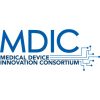It is Dr. D’s humble opinion that if a device manufacturer has had product seized due to compliance issues or egregious violations of the Act, then their quality and regulatory organizations must be run by “addlepated” (look-it-up) idiots. For this week’s guidance the doctor will provide some insight into the concept of Product Seizure. Now granted, the seizure process is just a tiny bit more complex than having U.S. Marshalls kicking in the doors and backing up and loading the proverbial turn-up truck. However, make no mistake seizure is one of the more powerful tools in the FDA’s compliance tool chest. They have ways of making you comply. Enjoy.
| Table 1.0 – FDA Product Seizures | |
|
Year |
Number of Product Seizures |
|
2009 |
8 |
|
2010 |
10 |
|
2011 |
15 |
|
2012 |
8 |
An example of the potential over reaction of FDA’s seizure process can be viewed in a highly-visible product seizure case from 2007 when the agency seized all implantable medical devices from a New Jersey-based medical device manufacturer in April of 2007. FDA claimed the seizure was driven by the identification of significant deficiencies noted during a plant inspection. FDA warned Shelhigh, Inc. of the consequences associated with their failure to address violations noted during a previous inspection. Although there was a few minor compliance issues noted during the Shelhigh inspection, some device industry experts believe FDA’s actions were not warranted. In fact, there was an underlying concern of the agency’s ability to act with impunity. Eventually, Shelhigh and FDA agreed to an out-of-court settlement.
References:
- Code of Federal Regulation. (2013, April). Title 21 Part 820: Quality system regulation. Washington, D.C.: U. S. Government Printing Office.
- Devine, C. (2011). Devine guidance for complying with the FDA’s quality system regulation – 21 CFR, Part 820. Charleston, SC: Amazon.
- FDA – U.S. Food and Drug Administration Website. (2013, June). Warning letters. Retrieved July 18, 2013, from http://www.fda.gov/ICECI/EnforcementActions/WarningLetters/
- FDA Guidance Document (2013, July). Definition of Seizure. Retrieved July 18, 2013, from http://www.fda.gov/MedicalDevices/DeviceRegulationandGuidance/GuidanceDocuments/ucm094529.htm#seizure
- FDA Seizes All Medical Products From N.J. Device Manufacturer for Significant Manufacturing Violations. (2007, April). FDA Website. Retrieved July 18, 2013, from http://www.fda.gov/NewsEvents/Newsroom/PressAnnouncements/2007/ucm108893.htm
- Rossetti, A. (2008, December). Shelhigh: anatomy of an FDA medical device product seizure. The Legal Examiner. Retrieved July 18, 2013, from http://westpalmbeach.legalexaminer.com/medical-devices-implants/shelhigh-anatomy-of-an-fda-medical-device-products-seizure/





